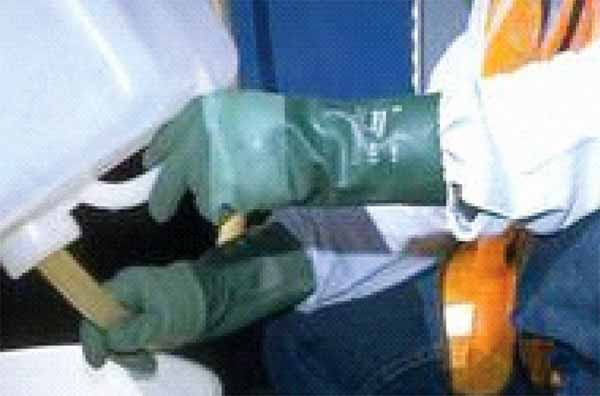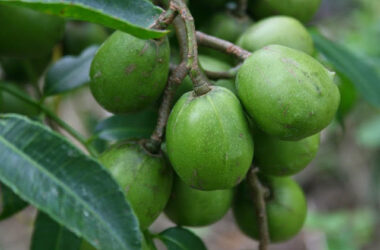By Laura Francis, Harvey Modest, Hannah Dupal-Romain
Ministry of Agriculture, Food Production, Fisheries, Co-operatives and Rural Development
ALTHOUGH pesticides are useful in controlling pests and diseases, they can also affect human health and the environment. Medical studies have shown that effects of pesticide poisoning can lead to health disorders such as cancer, birth defects, sterility, etc. During the observance of Pesticides Awareness Week, the public is being encouraged to adhere to the precautionary measures or safety rules applicable in the use of pesticides. The public has become increasingly concerned about the use of pesticides and the possible adverse effects on human health, wildlife, ground water, and overall environmental quality. Pesticide exposure from drift to non-target areas; contamination of ground and surface waters; and residues on food are all topics of concern to the general public. Applicators should be especially concerned because they may have the highest potential for exposure and thus, may have the greatest health risks. All applicators must be sensitive to public concerns about pesticide use and apply materials only in a safe and judicious manner.
• Pesticides are poisonous and must be used with caution. READ THE LABEL BEFORE OPENING A PESTICIDE CONTAINER. Follow all label precautions and directions, including requirements for protective equipment.
• Apply pesticides only on the crops or in the situations listed on the label.
• Apply pesticides at the rates specified on the label.
• Do not ship or carry pesticides together with food or feed in a way that allows contamination of the edible items. Never transport pesticides in a closed passenger vehicle or in a closed cab.
• Keep pesticides in original containers until used. If stored in a food container, chances are children can consume them. Store them in a locked cabinet, building, or fenced area where they are not accessible to children, unauthorized persons, pets, or livestock.
• DO NOT store pesticides with foods, feed, fertilizers, or other materials that may become contaminated by the pesticides.
• Dispose of empty containers carefully. Never reuse them. Make sure empty containers are not accessible to children or animals. Never dispose of containers where they may contaminate water supplies or natural waterways.
• Consult your agricultural extension office for correct procedures for handling and disposal of large quantities of empty containers.
Many pesticides are toxic to useful or desirable animals, including honey bees, natural enemies, fish, domestic animals, and birds. Crops and other plants may also be damaged by misapplied pesticides. Take precautions to protect non pest species from direct exposure to pesticides and from contamination due to drift, runoff, or residues. Plant a buffer zone around farms to prevent the pesticide from contaminating the water ways. Certain rodenticides may pose a special hazard to animals that eat poisoned rodents.
It is important to place postings in treated areas/ fields. For some materials, restricted entry intervals are established to protect field workers. Keep workers out of the field for the required time after application and, when required by regulations, post the treated areas with signs indicating the safe re-entry date. Check with your agricultural extension officer for information on restricted entry interval.
Some materials or rates cannot be used in certain crops within a specified time before harvest. Follow pesticide label instructions and allow the required time between application and harvest.
Before applying pesticides to crops destined for export, check maximum residue levels (MRLs) of the importing country.
Certain chemicals may cause injury to crops (phytotoxicity) under certain conditions. Always consult the label for limitations. Before applying any pesticide, take into account the stage of plant development, the soil type and condition, the temperature, moisture, and wind. Injury may also result from the use of incompatible materials.
Follow label directions carefully. Always wear PPE (Personal Protective Equipment) when mixing and applying pesticides. The trouser must be over the boots and your long sleeves over the gloves to prevent bodily contact with the pesticide. Avoid splashing, spilling, leaks, spray drift, and contamination of clothing.
NEVER eat, smoke, drink, or chew while using pesticides. Children should not handle pesticides. Wash clothing used for spraying apart from other clothing. Always have a first Aid kit and emergency number at your disposal in case of emergency.
It is recommended to spray early morning or late in the afternoon. Mix the quantity required to apply for the day. Do not mix a large amount and leave for the following day. This can cause the pesticide strength to be reduced.
Alternative use of Pesticide:
1. The use of biological control e.g. lady bird beetle to control pink mealybug.
2. Crop rotation.
3. Weed Management (manual weeding, mulching, cover crops, etc.)
4. Land preparation. (Tillage and drainage)
5. The use of companion crops
6. Intercropping.
7. Field scouting for control of insect pest e.g. caterpillars and diseases.
8. Field sanitation (the removal of damaged crops from the field to prevent spread of pests and diseases).
9. The use of resistant varieties.
10. Plant repellent plants as weed breaker e.g. Neem







